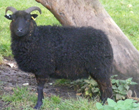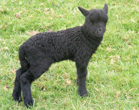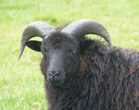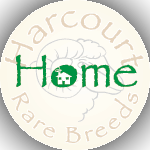
In Britain’s past, our Iron Age ancestors lived in wooden round houses and were farmers with sheep. Archaeological digs have shown that these early northern domestic sheep were small with short tails and many were horned . These little sheep would have been hardy and able to withstand the poor conditions and minimal management of the Iron Age.
Those sheep were not woolly in the way we associate with sheep today, but had a hair coat with a short warm undercoat which could be shorn or plucked.
The Celtic peoples of the west of the British Isles have always had a liking for black domestic animals. This is probably not just cosmetic. Black horned feet are harder, grow more slowly and are more resistant to rot.
The black colouration in Hebridean sheep is a recessive characteristic, so once black sheep had been selected, all their future lambs would also be black, or occasionally brown. It is easy to understand how these attractive additions to the parkland in front of the large country house would have been coveted by other estate owners.
The black colouration in Hebridean sheep is a recessive characteristic, so once black sheep had been selected, all their future lambs would also be black, or occasionally brown.
Over the centuries, Hebridean ewes have been selected by natural systems for hardiness in all weathers, ease of lambing, milkiness and good mothering instincts.
Because Hebrideans have not been modified by artificial selection they remain a small, economically efficient breeding ewe with a surprising ability to produce quality cross-bred lambs. Many Hebs are used for conservation grazing as they have very varied palettes.
Bluebell Hebridean
ewe

Suzie Hebridean
lamb

Nick the Hebridean
ram lamb.





